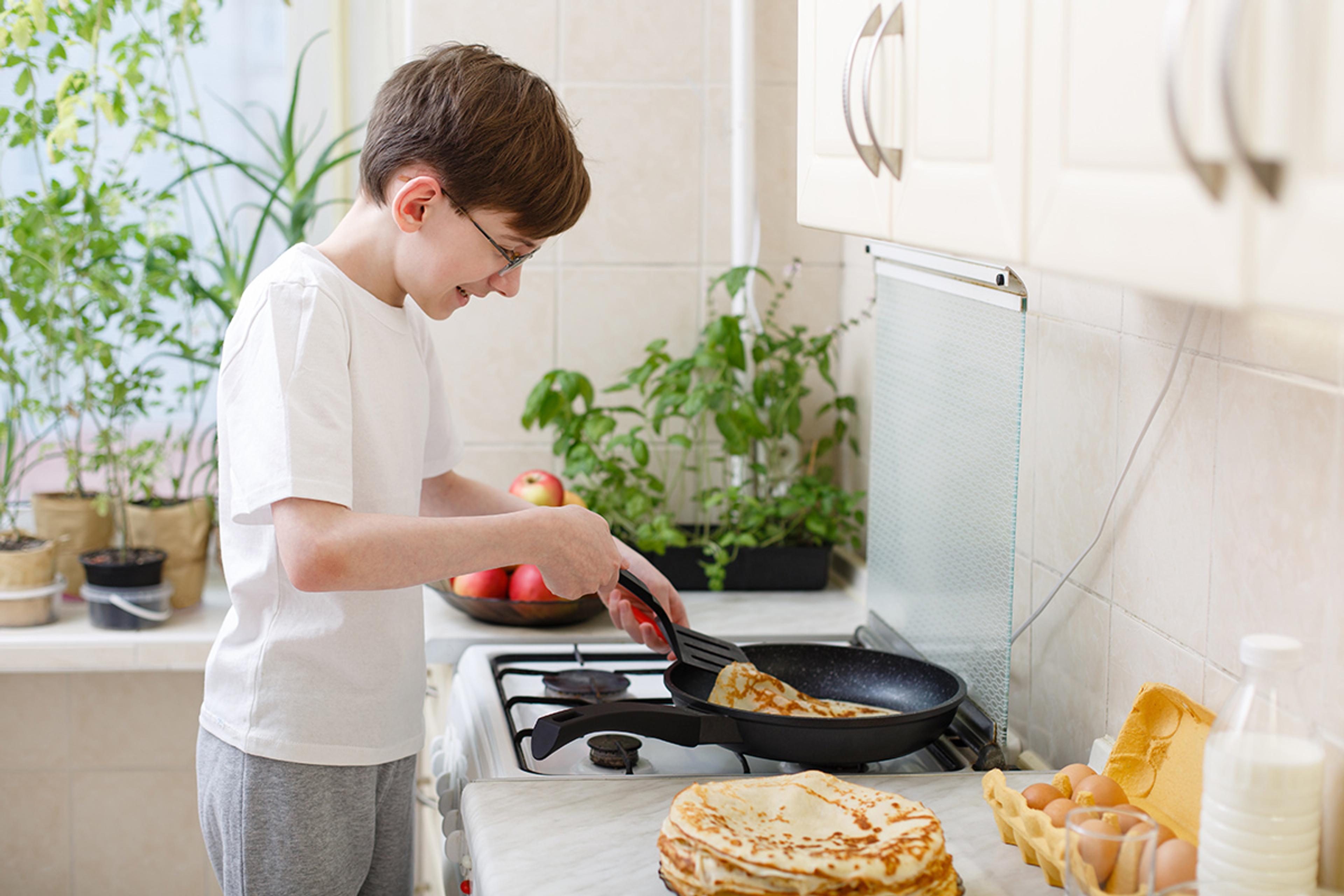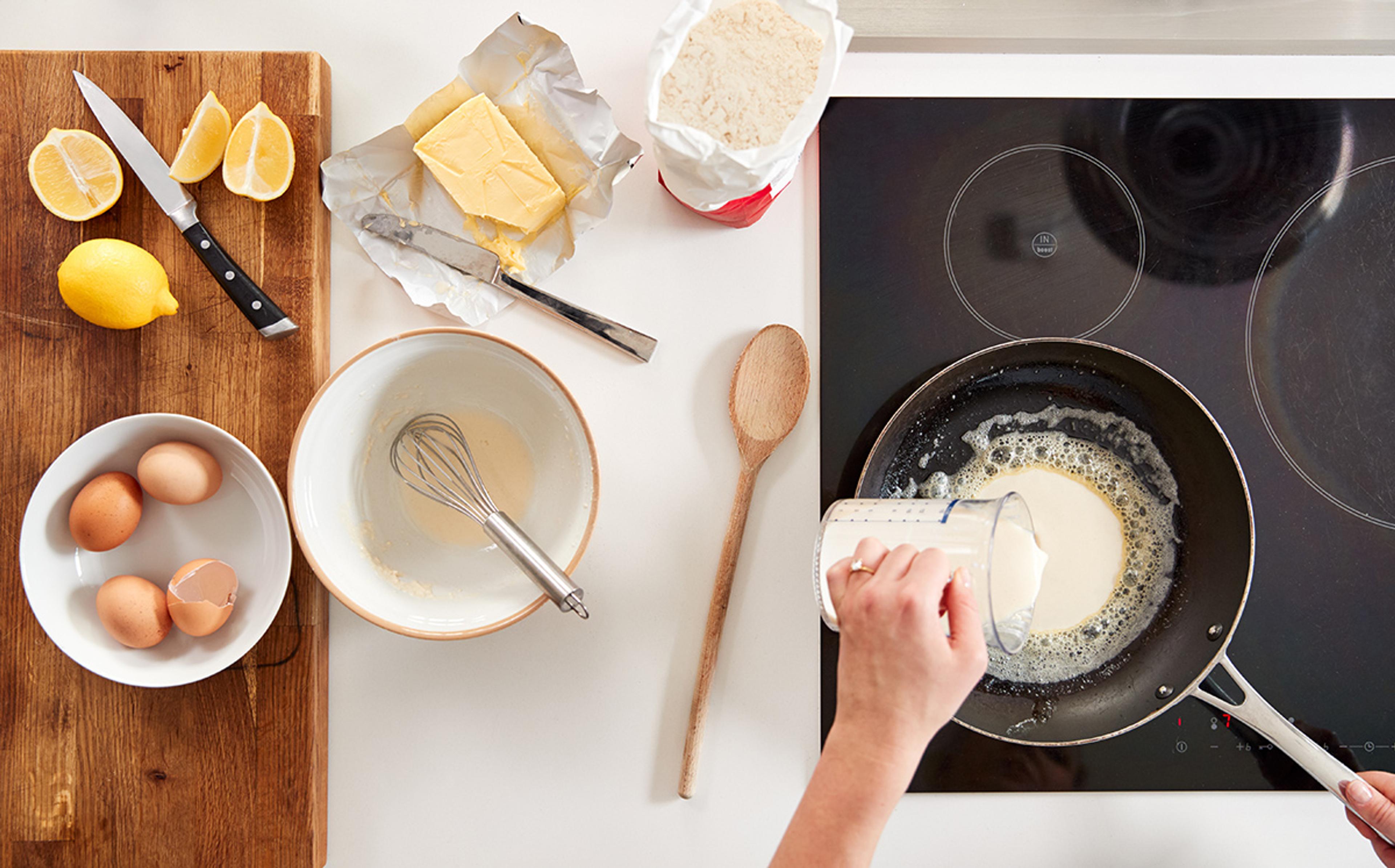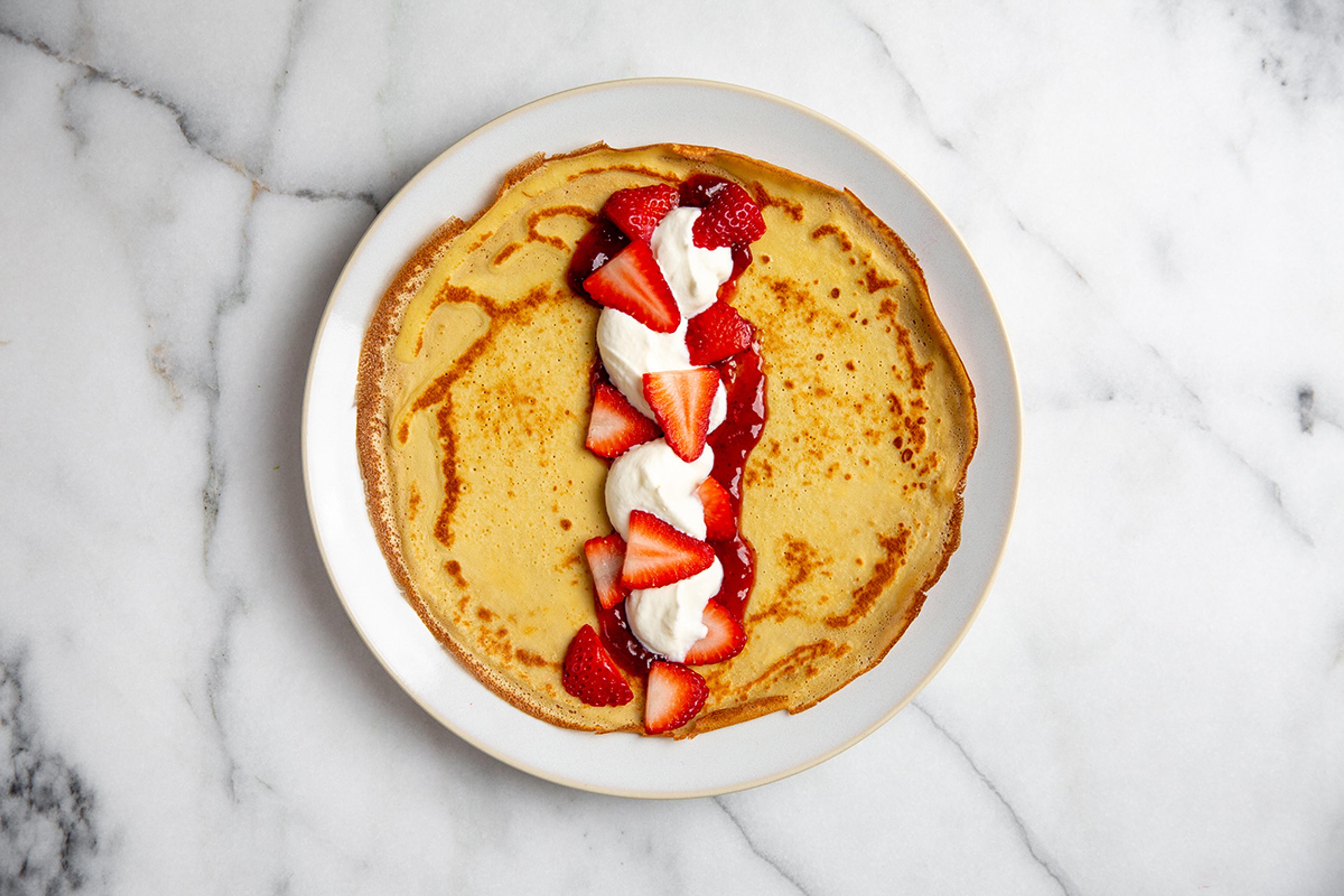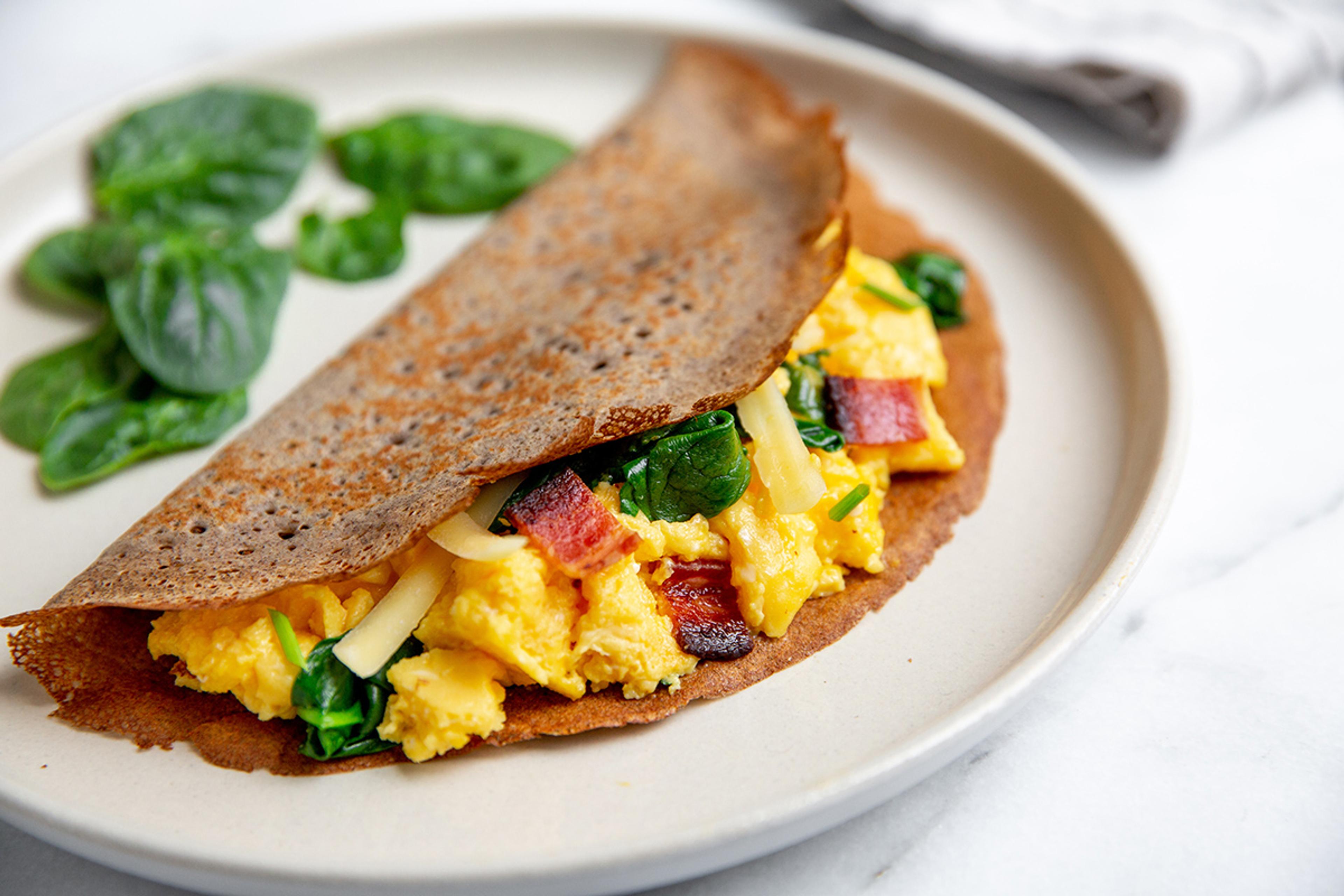
Food
Demystifying Crepes: Our Top Tips and Tricks
Crepes are super easy and fun to make with the whole family, and they’re customizable to meet everyone’s taste preferences or dietary restrictions. Crepes are a simple yet elegant dish to serve Mom for Mother’s Day brunch, or they make for a quick and tasty weeknight dinner. We’re dispelling any intimidation here with our best tips plus two delicious sweet and savory recipes to try!
I can still remember the first time I ate a fresh crepe in France many years ago. It was a warm and savory buckwheat flour crepe folded around a perfectly fried egg with delicious, melted gruyere cheese. The ingredients were so simple yet incredibly flavorful and ultra-comforting. I knew this would be a winning dish at home, so I recreated it for my family as soon as possible.
Crepes originated in northwest France and are thin pancakes made out of wheat flour, such as all-purpose flour or gluten-free buckwheat flour, with sweet or savory fillings. French cooking is often perceived as complicated, technical, and using many ingredients. While this may be true in some upscale French restaurants, I find that everyday French cuisine is actually very straightforward and focuses on simple dishes made from seasonal ingredients. Crepes are a perfect example of this.
They may seem intimidating to make at first, but they’re actually very easy and don’t require any special equipment or ingredients—you don’t need one of those commercial electric crepe griddles or little wooden rakes to spread the batter around. I’ve successfully used a cast-iron skillet, nonstick pan, and a steel crepe pan, which are all inexpensive and easily accessible, and are perfectly suitable for the job. And all you need is one hand and a quick swirl of your pan to spread the batter around into a thin and even layer. Also, a thin metal spatula and your fingers can be helpful when flipping the crepes so they don’t tear.
Maybe it’s the complicated pronunciation that intimidates some. I prefer to use the traditional French pronunciation, which is pronounced “cr-ep” instead of “cr-ape,” and I’ve created a little saying that helps me remember: “Take a STEP and make a CREPE!” “Step” and “crepe” rhyme. Kids love to help with this part. What other words rhyme? “Climb a ladder to reach the crepe batter.”
So, now let’s take a step and make a crepe!

Tips for Making Great Crepes at Home
1. Use a blender.
Instead of using a mixing bowl and whisk to combine the ingredients for the crepe batter, throw the ingredients into a blender and blend for 30 to 60 seconds for a smooth and silky batter. Using a blender is not only easier (and produces fewer dishes), it also helps introduce more air into the batter creating a lighter crepe and makes the batter easy to pour. Remember though, if using gluten-containing flour such as all-purpose flour, you’ll want to let the batter rest at room temperature for at least 30 minutes after blending to avoid producing a chewy crepe.
2. Slowly heat your pan.
Although it’s perfectly normal for the first crepe to turn out a little “creative” (oddly shaped, sometimes burned) no matter your crepe-making experience, slowly heating your pan can prevent burning your first few. This will preserve your batter and create more even heat in the pan, which will help you make consistent and evenly cooked crepes.
3. Use the same amount of batter each time.
When adding batter to your pan, consider using a measuring cup to create the same size crepe each time. I like to use a ¼ cup measure for a 9- or 10-inch pan, but you’ll need to adjust that up or down according to the size of your pan. Regardless of the size, you are aiming for a crepe about as thin as a credit card.

4. Swirl your pan in a circular motion.
Once you add your batter to the hot pan, grab the pan handle and swirl it around in a circle, spreading it evenly to the edge of the pan in a thin layer. This is a simple way to get consistently thin and round crepes. No special equipment needed.
5. Keep finished crepes warm.
Once you remove each crepe from the pan, keep them warm by stacking and covering them with a clean kitchen towel. This also helps them stay pliable and ready for any filling.

Photo by Nicki Sizemore.
Fun with Fillings
Some of my favorite savory crepe fillings include fried or scrambled eggs with cheddar cheese and bacon, thinly sliced pears or apples with melted brie cheese, or sauteed mushrooms, onions, and leafy greens like spinach or kale.
For sweet crepes, I like to use fruity toppings such as this Cherry Compote or Strawberry Rhubarb Sauce with homemade yogurt, or sliced seasonal fruit.
Consider setting up a crepe bar for your family to customize their own crepes. You can serve a platter of folded crepes alongside multiple toppings in separate bowls, like homemade yogurt, berries, chopped nuts, chocolate sauce, shredded cheese, sautéed vegetables, and more. This makes crepes a super fun and tasty activity any day of the week or for special occasions.
For more inspiration, enjoy these recipes for sweet and savory crepes:

Photo by Nicki Sizemore
Savory Gluten-Free Buckwheat Crepes
Buckwheat crepes originated in France and have evolved from a classic dish into a very popular street food. Buckwheat flour is naturally gluten-free and is packed with fiber and protein—a fantastic way to start your day! Depending on how you like to eat your crepes, you can fold or roll them around your favorite toppings or eat them open-faced.

Photo by Nicki Sizemore
Sweet Crepes with Strawberries and Cream
These sweet crepes with delicious toppings are as easy to make as pancakes! They’re perfect for breakfast, and leftovers can make a fun and delicious afternoon snack for the whole family. Depending on how you like to eat your crepes, you can fold them, eat them open-faced, or roll them up and eat them with your hands.
Carly Knowles, MS, RDN, LD is a master’s-educated registered dietitian, health coach and cookbook author of The Nutritionist’s Kitchen. She specializes in integrative nutrition and health coaching for women as well as media consulting for healthy food brands. For recipes, recommendations and more, visit her website at www.radiantknowing.com.
Related Articles
- Tags:
- recipes,
- cooking & entertaining
















